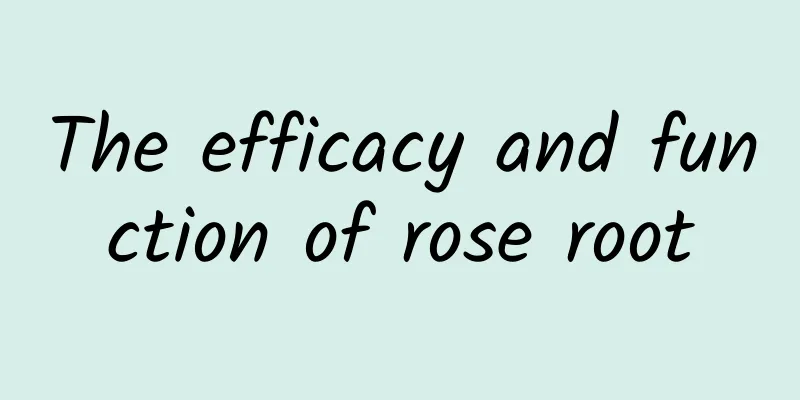Can women eat Cordyceps sinensis during menstruation?

|
The monthly menstruation of women will cause many girls to lose physical strength and even reduce their resistance. Cordyceps sinensis can quickly improve physical strength in a very short period of time. So can Cordyceps sinensis be taken between women's menstrual periods? Because there are still many people who eat Cordyceps sinensis, especially some patients with bronchial tubes, it has certain effects and girls can also eat it during menstruation. I believe that no one is unfamiliar with Cordyceps sinensis. Cordyceps sinensis has been a very famous tonic variety since ancient times. Cordyceps sinensis can enhance our immunity and has anti-tumor effects. Cordyceps sinensis can also regulate blood lipids and hematopoietic function. Since ancient times, Cordyceps sinensis has been regarded as a treasure of Chinese medicine, and is known as one of the three major Chinese tonics together with ginseng and deer antler. Traditional medicine believes that Cordyceps sinensis is sweet and flat in nature, enters the lung and kidney meridians, and can benefit the lungs and kidneys, relieve coughs, replenish deficiency, and benefit the essence and qi. "Supplement to Compendium of Materia Medica" records: Cordyceps sinensis is warm in nature, replenishes essence and benefits the marrow, and protects the lung qi. Soak a few pieces in wine and eat them to treat pain between the waist and knees, and it is good for the kidneys; cook and eat them with male duck, it is suitable for the elderly. Although Cordyceps sinensis has a wide range of effects, it is suitable for daily health care and enhancing immunity, especially for people with physical weakness, excessive sweating, spontaneous sweating, and night sweats; it is suitable for people who are weak after illness, long-term weakness or weak body, as well as various chronic wasting patients; it is suitable for people with insufficient kidney qi, sore waist and knees, impotence and spermatorrhea; it is suitable for the elderly with chronic bronchitis, emphysema, tuberculosis, bronchial asthma, cough, shortness of breath, weak asthma and hemoptysis; it is suitable for cancer patients and after radiotherapy and chemotherapy; it is suitable for patients with diabetes, lupus erythematosus, chronic nephritis, as well as patients with aplastic anemia and leukocytopenia. However, it is contraindicated for infants, people with fever (acute high fever patients), and women during menstruation; people with hot constitution, hypertension and stroke patients, and cancer patients should use it with caution or not use it during radiotherapy; people with internal bleeding (such as hemoptysis, bloody stool, etc.) or cerebral hemorrhage should not eat it; patients with rheumatoid arthritis should reduce the dosage; those with real fire or evil spirits should not eat it. Girls will have various physical reactions during menstruation. Some people especially like to eat Cordyceps sinensis, thinking that this medicinal material is mild and very helpful for lung conditioning. It can also greatly benefit some women's immunity. However, it is also necessary to pay attention to the time and dosage of taking it. |
<<: How to eat Cordyceps sinensis
Recommend
How to take saffron
Saffron is a common tonic in our lives. It can re...
Stop blindly comparing. This article teaches you how to judge whether your baby's height and weight meet the standards.
Author: Hu Fang, deputy chief physician, Women an...
Quantum communication: an important guarantee for the future autonomous and controllable information security ecosystem
"Quantum" is already a hot research fie...
Tinnitus: Taking Chinese medicine is effective
Tinnitus is the result of different pathological ...
Are humans the first civilization in the universe? Four scientific theories about aliens tell you the truth
This topic has been popular on the Internet for a...
Good news! Beidou high-precision positioning service has entered the mass mobile phone market, with an accuracy of 2 to 3 meters
On November 4, the State Council Information Offi...
Salonpas pain relief patch
Salonpas pain relief patch can effectively reliev...
The efficacy and function of sweet almonds
The medicinal value of sweet almonds is beyond ou...
What are the medicinal values of red vine
Red vine is a traditional Chinese medicinal mater...
The efficacy and function of pelican oil
Chinese medicinal materials are very common, and ...
600 million people are myopic, half of them are teenagers! Catch the "early warning signs" before children become myopic
There are about 600 million people with myopia in...
Can eating rice like this help you lose weight? Are you tempted?
I heard that cooling down cooked rice, steamed bu...
The 110th anniversary of Qian Xuesen’s birth | What did he leave us?
Creative team: China Science and Technology Museu...









